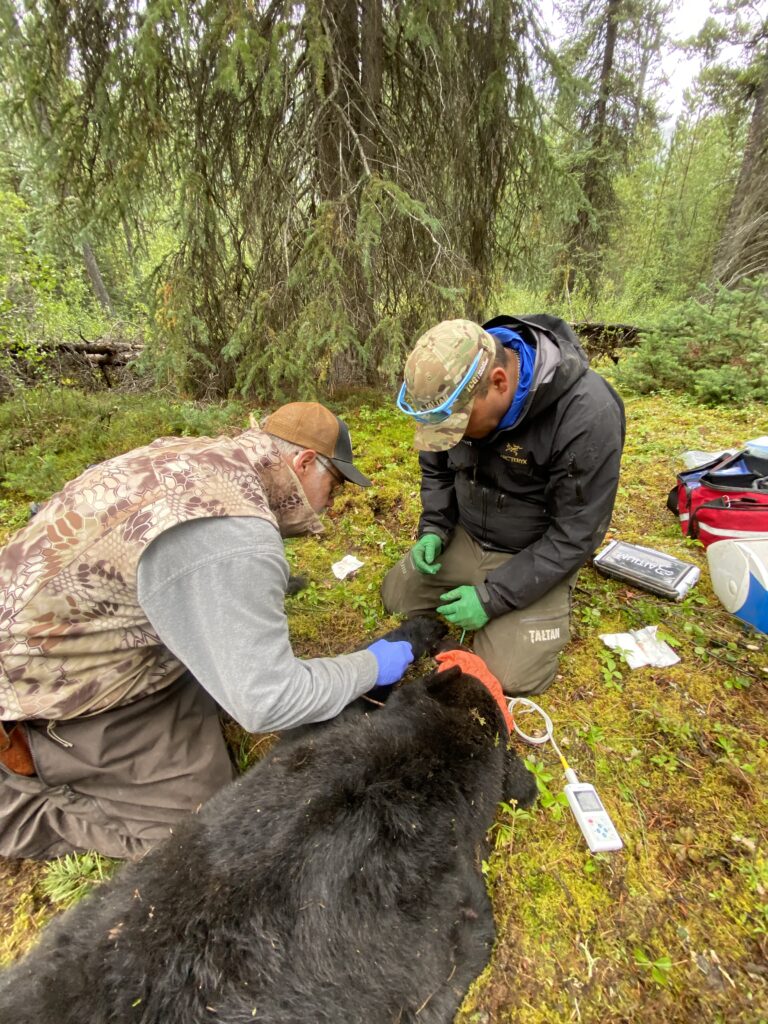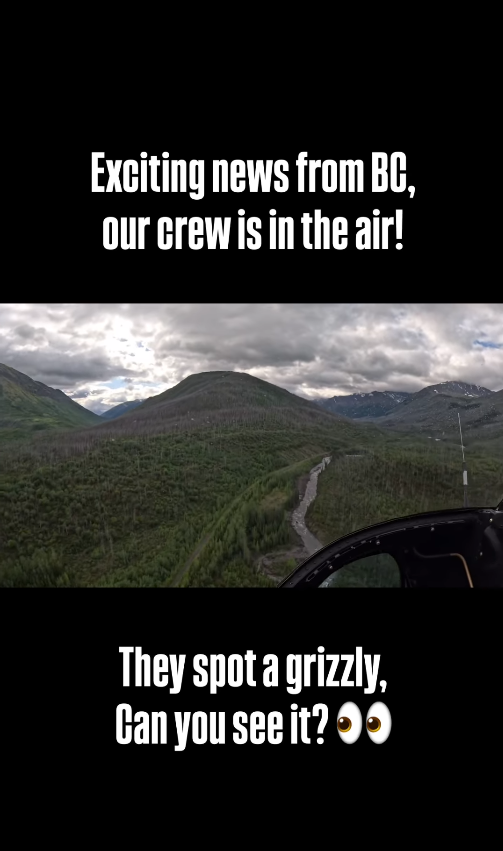In 2018, the Government of British Columbia decided to end licensed grizzly bear hunting, which has led to noticeable increases in bear density and activity. This increase has raised concerns about its impact on ungulate populations, crucial both culturally and nutritionally to the Tahltan people. Since 2019, the Tahltan Central Government (TCG) has intensified its predator management efforts through improved policies and management frameworks. TCG has independently monitored moose, caribou, and wolves to provide data to the province of British Columbia. In 2023, the shared information supported wildlife regulation proposals, highlighting ongoing trends of high wolf densities, and decreasing moose and caribou population demographics.
SCI Foundation (SCIF) North American carnivore program recognizes the challenges of managing large carnivores and supports wildlife management authorities by addressing gaps in knowledge needed to manage these species effectively. In partnership with SCIF, TCG aims to gather crucial data necessary for making informed decisions regarding growing grizzly bear populations.

The initial step involves deploying up to 20 GPS/video collars on grizzly bears to track their movements, habitat use, foraging areas, and predation patterns. SCIF crews are currently in BC working on deploying collars. Collars will remain on the bears throughout the caribou calving season. These collars will then be remotely released, allowing for the recovery and analysis of all recorded video content.
Safari Club International Foundation, through its Conservation Department, has agreed to partner and fund this vital project to:
· Build capacity and training for Tahltan Guardians and Tahltan graduate studies on wildlife management techniques and assessing information to support management strategies.
· Identify predation rates, calf, and adult ungulate prey selection, and refine estimates of population effects on culturally important ungulate populations.
· Develop grizzly bear management strategies and support ungulate recovery through a community-led Tahltan land use of candidate Indigenous Protected and Conserved Areas process.
Crews have established remote research cabins and taken to the skies in helicopters to begin deploying collars. You can find videos Video 1 – Video 2 of these efforts on SCIF’s social media pages.
For ongoing project updates, please follow SCIF on Facebook or Instagram.


